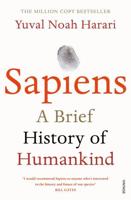Publisher's Synopsis
The hypermobility of the twenty-first century is fragile, arguably on the verge of momentous change. Public space is a particularly important locale of socio-technical innovation in mobile living. Based on studies of emerging mobility practices in and around public places, undertaken as part of experimental, interdisciplinary, collaborative design projects, the book addresses four dimensions of change:
- Mobilities in public spaces are 'naturally' changing. What are the key changes?
- Designers and policy-makers are intentionally changing mobility infrastructures, services, technologies and 'behaviours'. How are aims, incentives, visions formulated, implemented, appropriated, and evaluated?
- What practices and processes drive innovation?
- How can mobilities research and mobile methods inform change better?
Büscher contends that as analysts and designers inspired by the mobilities turn move with the people, objects, and ideas involved, they not only produce knowledge about, but also experiential knowledge of the complex effects of changing (im)mobilities, which can support the 'carefully radical and radically careful design' that is needed to shape desirable mobility futures. The book argues that it is productive to 'mobilize' innovation. Not least because the sensitivities and practices of engaged mobilities research respond to, and help define, 'homo mobilis', an emerging, perhaps imperfectly, but newly sensitized and equipped descendant of homo faber to address challenges posed by the momentous changes in mobile living likely to be wrought as climate change takes hold.
The book will be of interest to students and scholars of mobility studies, urban sociology, media and digital culture studies, transport and technology, design, technology, science and technology studies.











